Home>Furniture>Outdoor Furniture>How To Camp In A Hammock
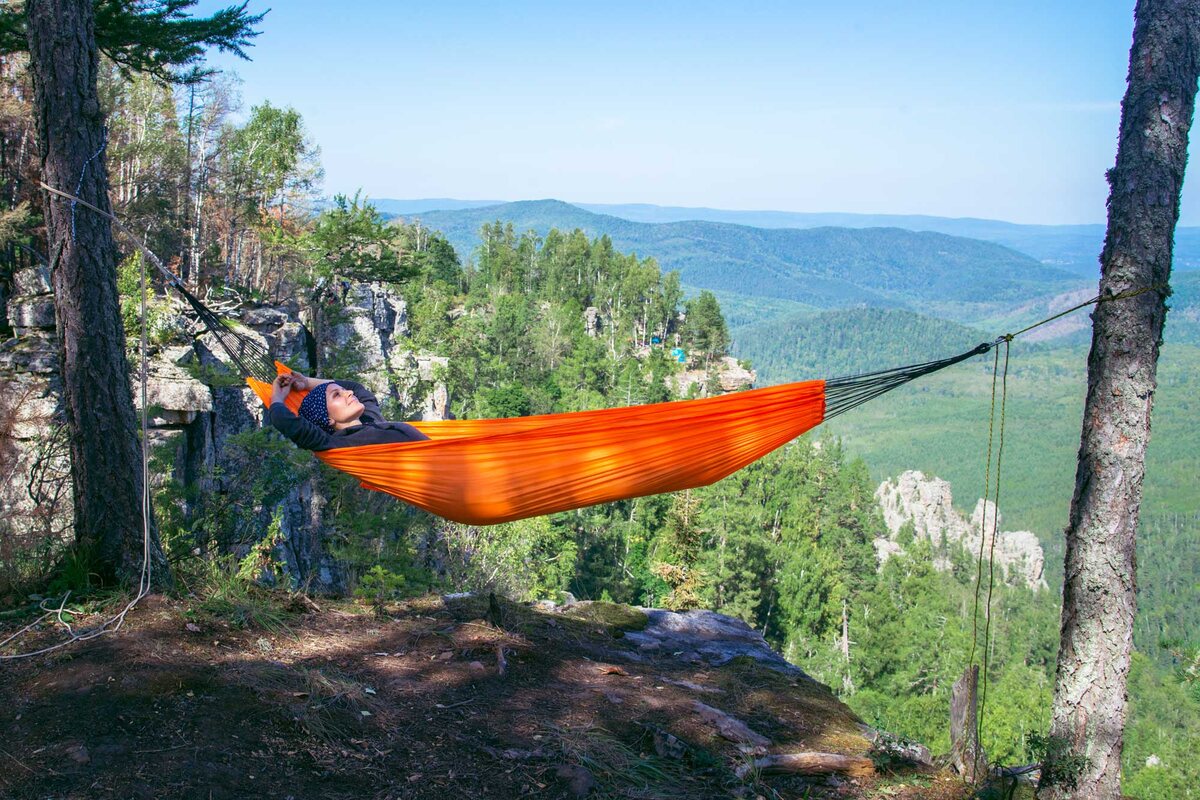

Outdoor Furniture
How To Camp In A Hammock
Modified: August 20, 2024
Learn how to enjoy the great outdoors with the ultimate outdoor furniture - a hammock. Find out tips and tricks for camping in a hammock and experience nature like never before.
(Many of the links in this article redirect to a specific reviewed product. Your purchase of these products through affiliate links helps to generate commission for Storables.com, at no extra cost. Learn more)
Introduction
When it comes to camping, it’s hard to beat the comfort and relaxation of sleeping in a hammock. Hammock camping has gained popularity in recent years due to its versatility, lightweight nature, and ability to offer a unique outdoor experience. Whether you’re a seasoned outdoor enthusiast or a beginner looking for an alternative to traditional tent camping, setting up camp in a hammock is a great option.
In this article, we will guide you through the process of hammock camping, from choosing the right hammock to packing up and leaving no trace. We’ll also provide tips and tricks for staying comfortable, protecting against the elements, and enjoying delicious campfire meals. So, grab a cup of coffee and let’s dive into the world of hammock camping!
Key Takeaways:
- Hammock camping offers a unique and enjoyable way to connect with nature, from choosing the right hammock to leaving no trace. It’s all about embracing simplicity, tranquility, and the freedom of exploring the great outdoors.
- Prioritize safety, comfort, and responsible camping practices while hammock camping. From setting up your hammock to cooking in nature, it’s all about enjoying the serenity of sleeping in a hammock while minimizing your impact on the environment.
Choosing the Right Hammock
When it comes to hammock camping, selecting the right hammock is crucial for a comfortable and enjoyable experience. There are various factors to consider before making your purchase.
1. Size and Capacity: Hammocks come in different sizes and weight capacities. Consider whether you will be camping alone or with a partner and choose a hammock that can accommodate your needs. Look for hammocks with a weight capacity that exceeds your body weight to ensure durability and safety.
2. Material: Hammocks are typically made from nylon or polyester. Nylon is lightweight, breathable, and quick-drying, making it ideal for camping in various weather conditions. Polyester is more durable and resistant to UV rays, but it tends to be heavier. Consider the climate and terrain where you’ll be camping to choose the most suitable material for your hammock.
3. Suspension System: Look for hammocks that come with a reliable suspension system. This can include tree straps, ropes, or carabiners. Ensure that the suspension system is adjustable and easy to set up, as this will greatly impact the convenience of your camping experience.
4. Extras and Accessories: Some hammocks come with additional features such as integrated bug nets, rainfly attachments, or storage pockets. Consider whether these extras are necessary for your camping needs. Keep in mind that adding accessories may increase the weight and bulkiness of your hammock.
5. User Reviews and Recommendations: Read reviews and seek recommendations from fellow campers or outdoor enthusiasts. This will provide you with insights into the durability, comfort, and overall performance of different hammocks. Pay attention to feedback regarding ease of setup, comfort level, and long-term durability.
By considering these factors, you’ll be able to narrow down your options and find the perfect hammock for your camping adventures. Remember, the right hammock can make all the difference in ensuring a comfortable and enjoyable camping experience.
Selecting the Ideal Campsite
Choosing the right campsite is essential for a successful hammock camping trip. Here are some factors to consider when selecting your campsite:
1. Location: Look for a location that aligns with your preferences and interests. Whether you’re seeking solitude in the wilderness or want to be closer to amenities and facilities, consider the type of environment that suits your camping style. Research local parks, national forests, or private campgrounds to find the perfect spot.
2. Trees and Anchor Points: Hammocks rely on trees or anchor points for setup. Look for trees that are sturdy and spaced appropriately, allowing for proper hammock suspension. Ensure that the trees are strong enough to support your weight and the hammock’s weight capacity, minimizing the risk of accidents or damage to the trees.
3. Accessibility: Consider the accessibility of the campsite. Is it easy to reach, or will you need to hike a significant distance? Evaluate your fitness level and how much gear you’ll be carrying to determine the best accessibility option for your needs.
4. Terrain and Ground Conditions: Take note of the terrain and ground conditions at the campsite. Avoid areas prone to flooding or known for rocky terrain, as these can affect the comfort and stability of your hammock setup. Look for level ground that will allow for a more comfortable sleeping position in the hammock.
5. Privacy and Noise: Consider the level of privacy and noise at the campsite. If you prefer solitude, look for campsites that are more secluded. If you enjoy the company of other campers, choose campsites with designated communal areas or campsites that allow for closer interaction with fellow outdoor enthusiasts.
6. Local Regulations and Permits: Familiarize yourself with any regulations or permits required for camping in the area. Some locations may have restrictions on hammock camping or require specific permits. Always abide by the rules and regulations to ensure a responsible and environmentally-friendly camping experience.
By carefully considering these factors, you’ll be able to find the ideal campsite for your hammock camping adventure. Remember to check the weather forecast and plan accordingly to ensure a safe and enjoyable experience in the great outdoors.
Setting Up Your Hammock
Properly setting up your hammock is crucial for a comfortable and secure camping experience. Follow these steps to ensure a successful setup:
- Choose the Right Trees or Anchor Points: Locate two sturdy trees or anchor points that are at an appropriate distance apart for your hammock. Ensure that the trees are healthy and capable of supporting the weight of both the hammock and the camper.
- Attach the Suspension System: Connect your suspension system to the trees or anchor points. This can be done using tree straps, ropes, or carabiners. Ensure that the suspension system is properly tightened and secure.
- Set the Angle: Position your hammock at a slight angle when attaching it to the suspension system. This will allow for a flatter and more comfortable sleeping position, as well as providing a slight diagonal sway.
- Adjust the Height: Adjust the height of your hammock according to your preference. Keep in mind that a lower suspension will provide more stability, while a higher suspension will give you more swinging motion.
- Lie Down and Test: Test your hammock by lying down in it and adjusting your position as needed. Ensure that the hammock is level and comfortable. Make any necessary adjustments to the suspension system or anchor points to achieve optimal comfort.
- Use a Hammock Tarp or Rainfly: If there’s a chance of rain or you want additional protection from the elements, set up a hammock tarp or rainfly above your hammock. Ensure that it is securely attached to the trees or anchor points and properly tensioned to provide adequate coverage.
Remember, practice makes perfect when it comes to setting up your hammock. Take the time to familiarize yourself with the process before your camping trip to avoid any unnecessary frustrations.
Additionally, always consider Leave No Trace principles when setting up your hammock. Avoid damaging trees or vegetation, and be mindful of the impact you have on the environment.
Now that you have your hammock properly set up, it’s time to enjoy the tranquility and comfort of sleeping suspended in nature!
Essential Equipment and Accessories
While hammock camping requires minimal gear compared to traditional tent camping, there are several essential equipment and accessories that can enhance your experience. Here are some key items to consider:
- Sleeping Gear: Invest in a high-quality sleeping bag or insulated sleeping pad specifically designed for hammock camping. These will help regulate your body temperature and provide insulation between you and the hammock, ensuring a comfortable night’s sleep.
- Underquilt or Hammock Insulation: An underquilt is a quilt-like accessory that hangs beneath your hammock, providing insulation and warmth from below. Alternatively, you can use insulation pads or blankets to create a barrier between you and the cold air.
- Pillows and Comfort Items: Bring a pillow or inflatable camping pillow for added comfort. You can also consider bringing a small blanket or a camping hammock chair for lounging during the day.
- Bug Net: Depending on the location and time of year, insects may pose a nuisance during your camping trip. Invest in a bug net that fits your hammock to protect yourself from mosquitoes, flies, and other bothersome bugs.
- Rain Protection: A waterproof hammock tarp or rainfly is essential to keep you dry during rainy weather. Ensure that it is large enough to cover your entire hammock setup and provides adequate protection from the elements.
- Lighting: Carry a lightweight, compact camping lantern or headlamp for navigating around the campsite at night. This will ensure your safety and help you find your way to and from the hammock.
- Storage and Organization: Use gear organizers, stuff sacks, or hanging pockets to keep your essentials within reach. This will help you stay organized and prevent items from getting lost or damaged.
- Camping Cookware: If you plan on cooking meals while hammock camping, bring lightweight camping cookware, such as a stove, a pot, and utensils. Consider opting for compact and lightweight options to minimize the weight and bulk in your backpack.
- First Aid Kit: Always carry a well-stocked first aid kit that includes essential items like bandages, antiseptic wipes, pain relievers, and any necessary personal medications.
- Navigation and Communication: Carry a map, compass, or GPS device to help you navigate the area. Additionally, bring a fully charged mobile phone for emergencies, but remember to disconnect and enjoy the serenity of nature.
Remember, the specific equipment and accessories you bring will depend on your personal preferences and the conditions of your camping trip. Consider the climate, duration, and remoteness of your destination when packing. Always prioritize lightweight and compact gear to minimize the weight and bulk in your backpack.
By having the right equipment and accessories, you’ll be well-prepared for a comfortable and enjoyable hammock camping experience.
Read more: How To Choose A Hammock
Staying Comfortable and Protected
When hammock camping, it’s important to prioritize your comfort and protect yourself from the elements. Here are some tips to help you stay comfortable and protected during your camping trip:
- Proper Insulation: Ensure you have adequate insulation beneath your hammock to keep you warm. Use an underquilt, a sleeping pad, or blankets to provide insulation and prevent heat loss from below.
- Bug Protection: Use a bug net to keep pesky insects at bay while you sleep. Ensure that the bug net is properly secured and covers your entire hammock to prevent any unwanted visitors.
- Stay Dry: Set up a waterproof hammock tarp or rainfly above your hammock to protect you from rain or dew. Make sure the tarp is properly tensioned and covers the entire hammock setup to keep everything dry.
- Proper Clothing: Dress appropriately for the weather conditions. Layer your clothing to adjust for temperature changes throughout the day and night. Consider moisture-wicking fabrics that will keep you dry and comfortable.
- Consider Wind Protection: If you’re camping in an open area susceptible to wind, consider setting up a windbreak to create a more sheltered environment. This can be done using a tarp or natural features such as bushes or trees.
- Choose a Comfortable Sleeping Position: Experiment with different sleeping positions in your hammock to find the most comfortable one for you. Some people prefer to sleep diagonally to flatten out the hammock and minimize the curve.
- Relaxation and Entertainment: Bring along some form of entertainment, such as a book, music, or games, to relax and unwind during your downtime in the hammock.
- Hydration: Stay hydrated by drinking plenty of water throughout the day. Keep a water bottle or hydration pack nearby to ensure you have easy access to refreshment.
- Effective Lighting: Use a headlamp or other sources of light to navigate around your campsite at night. This will help prevent accidents and ensure your safety.
- Maintain Good Hygiene: Practice good hygiene while camping by washing your hands regularly and maintaining cleanliness around the campsite. Use biodegradable soap to minimize your impact on the environment when washing up.
- Enjoy the Outdoors: Take the time to appreciate the beauty of the natural surroundings. Relax in your hammock, soak in the peaceful atmosphere, and savor the tranquility of nature.
Remember, everyone’s definition of comfort may vary, so adjust and adapt these tips to suit your personal preferences. Prioritize your comfort and well-being to ensure a pleasant and rejuvenating hammock camping experience.
When setting up your hammock for camping, make sure to find sturdy anchor points and use tree-friendly straps to avoid damaging the trees. Always test the hammock’s weight capacity before getting in.
Campfire Considerations
Building a campfire is a classic camping experience, but it’s important to approach it with caution and follow proper safety guidelines. Here are some considerations to keep in mind when enjoying a campfire while hammock camping:
- Check Local Regulations: Before starting a campfire, research and comply with any regulations or restrictions in the area you’re camping. Some campgrounds or national parks may have specific rules regarding campfires.
- Choose a Safe Location: Find a designated fire ring or clear a space for your campfire that is a safe distance from your hammock. Ensure there are no low-hanging branches or flammable materials in the vicinity.
- Prepare Fire Safety Equipment: Keep a bucket of water or a fire extinguisher nearby to quickly extinguish the fire if needed. It’s essential to have these items readily available in case of emergencies.
- Collect Firewood Responsibly: Use only fallen and dead wood for your campfire. Avoid damaging live trees and vegetation by gathering wood from the ground. Respect the natural environment and leave no trace.
- Follow Firewood Guidelines: Use dry and seasoned firewood for a cleaner and more efficient burn. Green or wet wood produces more smoke and can be harder to ignite. Better yet, bring your own firewood to ensure availability and adherence to local regulations.
- Build a Proper Fire Pit: Construct a fire pit by arranging rocks or using a designated fire ring. This helps contain the fire and prevents it from spreading. Keep the fire small and manageable.
- Monitor and Tend to the Fire: Never leave a campfire unattended. Always keep an eye on the fire and regularly tend to it by adding firewood as needed. Ensure that the fire is completely extinguished before leaving your campsite or going to sleep.
- Respect Fire Restrictions: During dry or fire-prone seasons, there may be fire restrictions in place. Follow these restrictions to prevent wildfires and ensure the safety of yourself and others.
- Alternative Cooking Methods: If you plan on cooking over a campfire, use a portable camping stove or a grill grate. This ensures that you have a controlled and safe cooking surface without damaging the environment.
- Clean and Dispose of Ashes Properly: Once the fire has fully extinguished and the ashes are cool, carefully dispose of them in a designated fire pit or appropriate waste disposal. Avoid scattering or leaving hot ashes unattended.
By following these campfire considerations, you can enjoy the warmth, ambiance, and cooking capabilities of a campfire while practicing responsible and safe camping habits. Remember, fire safety is everyone’s responsibility, and we should always strive to leave our campsite in the same condition as we found it for future campers to enjoy.
Cooking in a Hammock
While hammock camping may not provide a traditional cooking setup like a campfire grill or a camping stove table, it is still possible to prepare delicious meals right from your hammock. Here are some creative ideas and tips for cooking in a hammock:
- One-Pot Meals: Simplify your cooking setup by preparing one-pot meals that require minimal space and equipment. Consider hearty soups, stews, or pasta dishes that can be cooked in a single pot or a lightweight camping stove.
- Precooked Meals: Precook meals at home and store them in airtight containers or vacuum-sealed bags. Simply reheat them over a camping stove or in boiling water when you’re ready to eat. This saves time and allows for easier cleanup.
- Campfire Cooking: If campfire cooking is allowed at your campsite, take advantage of it. Cook meals in foil packets or use a grilling grate to prepare meat, veggies, and even desserts over the fire.
- Cooking Accessories: Invest in lightweight camping cookware and accessories that are easy to transport and set up. Look for collapsible pots and pans, compact utensils, and multipurpose cooking tools to maximize space and minimize weight.
- Use a Camping Stove: A camping stove is a versatile option for cooking in a hammock. Choose a lightweight and compact stove that fits your needs and allows for easy flame control. Place the stove on a stable surface or use a heat-resistant mat to protect your hammock fabric.
- Make Use of Hammock Attachments: Some hammocks come with built-in pockets or attachable organizers. Utilize these features to hold your cooking utensils, spices, or small ingredients, keeping them within reach while being suspended in your hammock.
- Pack Portable Snacks: Pack a variety of portable snacks that require no cooking at all. Granola bars, trail mix, dried fruit, and jerky are excellent options for on-the-go nourishment during your hammock camping trip.
- Cooking Hygiene: Practice good hygiene while cooking in your hammock. Wash your hands thoroughly with biodegradable soap and use hand sanitizers when water is not readily available. Keep your cooking area clean and dispose of any food waste properly.
- Consider Local Regulations: Check if there are any restrictions on cooking in your campsite or the surrounding area. Some locations may have specific guidelines for open fires, grilling, or food storage. Always follow the rules and regulations to ensure a safe and responsible camping experience.
- Experiment and Have Fun: Cooking in a hammock can be a fun and unique experience. Get creative with your meals, try new recipes, and enjoy the simplicity of preparing delicious food from the comfort of your suspended hammock.
Remember, safety is paramount while cooking in a hammock. Ensure proper ventilation to prevent heat build-up and keep flammable items away from the stove. Always extinguish any flames or heat sources before leaving your campsite or going to sleep.
By using these tips and getting creative with your cooking techniques, you can enjoy tasty and satisfying meals while hammock camping.
Safety Tips for Hammock Camping
While hammock camping is generally a safe and enjoyable outdoor activity, it’s important to prioritize safety to ensure a successful and incident-free experience. Here are some safety tips to keep in mind while hammock camping:
- Choose Sturdy Trees or Anchor Points: When selecting trees or anchor points for your hammock, ensure they are strong and capable of supporting both your weight and the weight capacity of the hammock. Avoid using dead or damaged trees as they may be unstable and pose a risk of falling branches.
- Inspect Your Hammock and Suspension System: Before every trip, thoroughly inspect your hammock and suspension system for any signs of wear, tear, or damage. Check for frayed straps, weak seams, or broken carabiners. Replace any faulty parts to ensure your hammock is safe and secure.
- Choose a Safe Campsite: Select a campsite that is free from potential hazards such as dead tree branches, steep slopes, or rocky terrain. Assess the surroundings for any potential risks and ensure that your hammock is set up in a location that allows for safe entry and exit.
- Practice Proper Hammock Setup: Take the time to properly set up your hammock, ensuring that it is securely attached to the suspension system and adjusted to an appropriate height and angle. Verify that the knots, carabiners, or straps are tightened and double-checked before getting in.
- Be Mindful of Weight Capacity: Always adhere to the weight capacity limit of your hammock to prevent accidents or damage. Distribute your weight evenly in the hammock and avoid sudden movements or excessive swinging that may cause instability.
- Protect Yourself from the Elements: While hammock camping, be prepared for changes in weather by carrying appropriate clothing, rain gear, and insulation. Ensure your hammock setup includes a rainfly or tarp to protect against rain, wind, and excessive sun exposure.
- Be Aware of Wildlife: Research the local wildlife in the area you’ll be camping and be mindful of their habits and potential encounters. Store food securely and dispose of waste properly to minimize the risk of attracting wildlife to your campsite.
- Carry Essential Safety Equipment: Keep a well-equipped first aid kit, a map, a compass, a whistle, and a flashlight readily available. Familiarize yourself with basic first aid procedures and know how to navigate in case of emergencies.
- Practice Leave No Trace Principles: Follow the principles of Leave No Trace to minimize your impact on the environment. Pack out all trash, dispose of waste properly, and avoid damaging vegetation or wildlife habitats.
- Inform Others About Your Plans: Before heading out on your hammock camping adventure, inform a trusted friend or family member about your planned itinerary, including the location and duration of your trip. Check in with them regularly and notify them when you have safely returned.
- Know Your Limits: Assess your own physical fitness, skills, and experience when planning your hammock camping trip. Choose activities and terrain that are within your capabilities to ensure your safety and enjoyment.
By following these safety tips, you can minimize risks and maximize your enjoyment while hammock camping. Always prioritize safety, be prepared, and make responsible decisions throughout your outdoor adventure.
Read more: What Is A Hammock
Packing Up and Leaving No Trace
As responsible outdoor enthusiasts, it’s important to leave our campsite in the same condition, or better, as we found it. Here are some tips for packing up and leaving no trace during your hammock camping trip:
- Clean Up Your Campsite: Before leaving, thoroughly clean your campsite, removing any trash or debris. Dispose of waste properly in designated receptacles or take it with you if there are no waste facilities nearby.
- Pack Out Everything: Make sure you pack out everything you brought with you, including food wrappers, used toiletries, and any other non-biodegradable materials. Leave nothing behind except footprints.
- Properly Extinguish Campfires: Before leaving your campsite, ensure that all campfires are completely extinguished. Douse the fire with water, stir the ashes, and repeat the process until there are no signs of smoke or heat.
- Respect Wildlife and Natural Habitats: Observe wildlife from a distance and avoid disturbing their natural habitats. Do not feed animals or leave food waste that could alter their behavior or create dependency.
- Minimize Ground Impact: Set up your hammock without causing damage to vegetation or trees. Avoid stepping on delicate plants and use existing trails whenever possible to minimize your impact on the surrounding environment.
- Practice Proper Waste Disposal: Carry a small, sealable bag for personal waste and dispose of it in accordance with local regulations. Bury human waste at least six to eight inches deep and well away from water sources.
- Respect Local Regulations: Familiarize yourself with and abide by any specific regulations set by the land management agency or local authorities. This can include restrictions on camping, campfire usage, or designated camping areas.
- Leave Natural and Historical Items: Refrain from collecting natural souvenirs or removing artifacts from historical sites. Leave these items untouched for others to enjoy and for the ecosystem to maintain its balance.
- Spread Out Impact: If you notice a heavily-used camping area or crowded trails, consider exploring alternative locations to distribute the impact of visitors and prevent further degradation of ecosystems.
- Leave Nature Untouched: Resist the temptation to carve or mark trees, rocks, or other natural features. Leave nature as you found it, allowing future visitors to enjoy the same beauty and serenity.
- Educate Others: Take the opportunity to educate fellow campers about the principles of Leave No Trace. Lead by example and encourage others to minimize their impact and preserve the natural environment for future generations.
By following these guidelines and practicing Leave No Trace principles, you can help preserve the natural beauty of the outdoors and ensure a positive and sustainable hammock camping experience for yourself and others.
Conclusion
Hammock camping offers a unique and enjoyable way to experience the great outdoors. From the initial selection of the right hammock to the final task of leaving no trace, each step of the journey contributes to a memorable and rewarding adventure.
Choosing the right hammock is essential for comfort and durability. Consider the size, material, and additional accessories that will suit your needs. Selecting an ideal campsite ensures a safe and enjoyable experience, with attention to factors like location, trees or anchor points, and privacy.
Properly setting up your hammock is crucial for a secure and comfortable sleep. Take care to attach the suspension system correctly, adjust the height and angle of the hammock, and test its stability before settling in.
While hammock camping requires less gear than traditional tent camping, there are still essential equipment and accessories to consider for a comfortable trip. From sleeping gear and bug protection to cooking utensils and safety equipment, having the right supplies will enhance your camping experience.
Staying comfortable and protected in your hammock involves insulation, bug protection, staying dry, and dressing appropriately for the weather. Implementing these measures will ensure that you can relax and enjoy the serenity of your hammock even in unpredictable conditions.
Campfire considerations are crucial for a safe and enjoyable camping trip. Checking local regulations, choosing a safe location, and responsibly collecting firewood are important steps to enjoy the warmth and ambiance of a campfire.
Cooking in a hammock requires creativity and adaptability. Whether you choose one-pot meals, precooked food, or utilize a camping stove or campfire, preparing meals from your hammock can be a satisfying and enjoyable experience.
Ensuring safety while hammock camping includes choosing secure trees or anchor points, inspecting your gear, and being aware of potential hazards. Following safety guidelines, knowing your limits, and respecting the environment are all important aspects of a safe camping trip.
Finally, packing up and leaving no trace is a crucial part of being a responsible camper. Properly disposing of waste, extinguishing campfires, and respecting wildlife and natural habitats are essential practices for leaving a positive and sustainable impact.
In conclusion, hammock camping offers a unique and enjoyable way to connect with nature. By following the tips and guidelines outlined in this article, you can create lasting memories, appreciate the beauty of the outdoors, and leave a minimal footprint on the environment. Embrace the simplicity and tranquility of sleeping in a hammock, and enjoy the freedom and adventure of exploring the great outdoors.
Frequently Asked Questions about How To Camp In A Hammock
Was this page helpful?
At Storables.com, we guarantee accurate and reliable information. Our content, validated by Expert Board Contributors, is crafted following stringent Editorial Policies. We're committed to providing you with well-researched, expert-backed insights for all your informational needs.
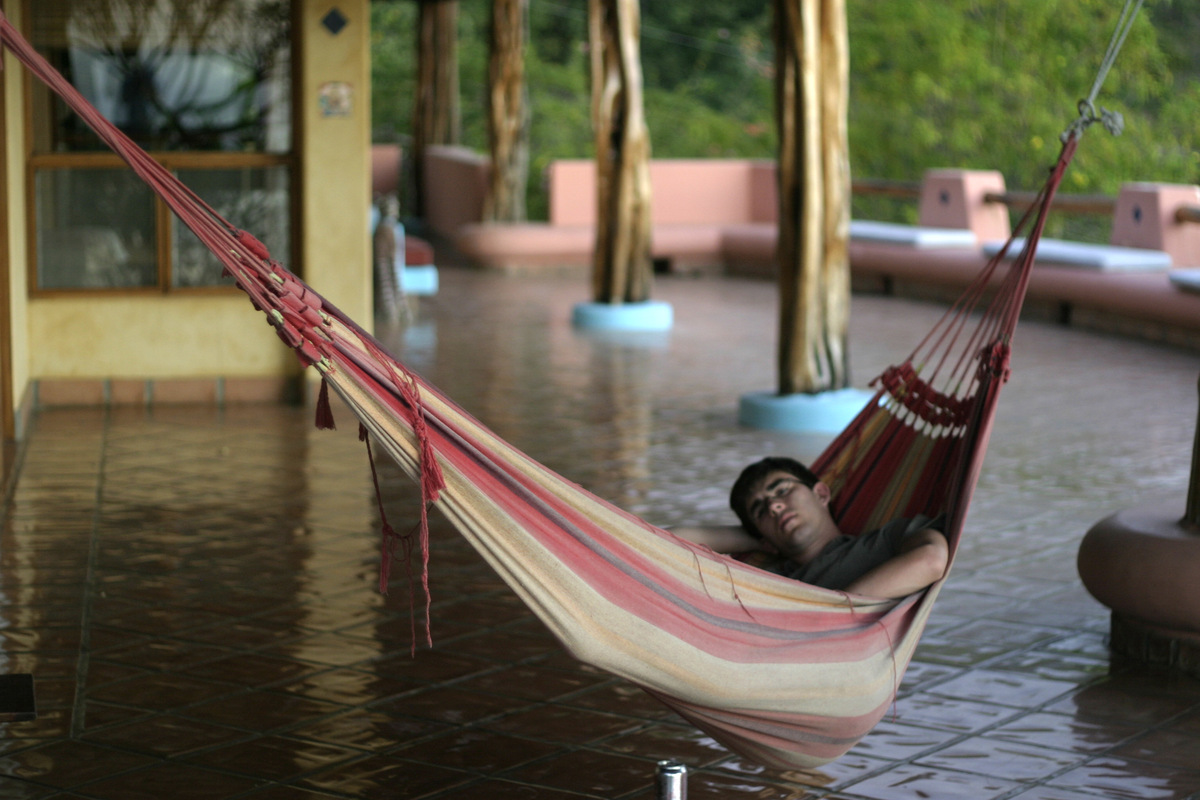


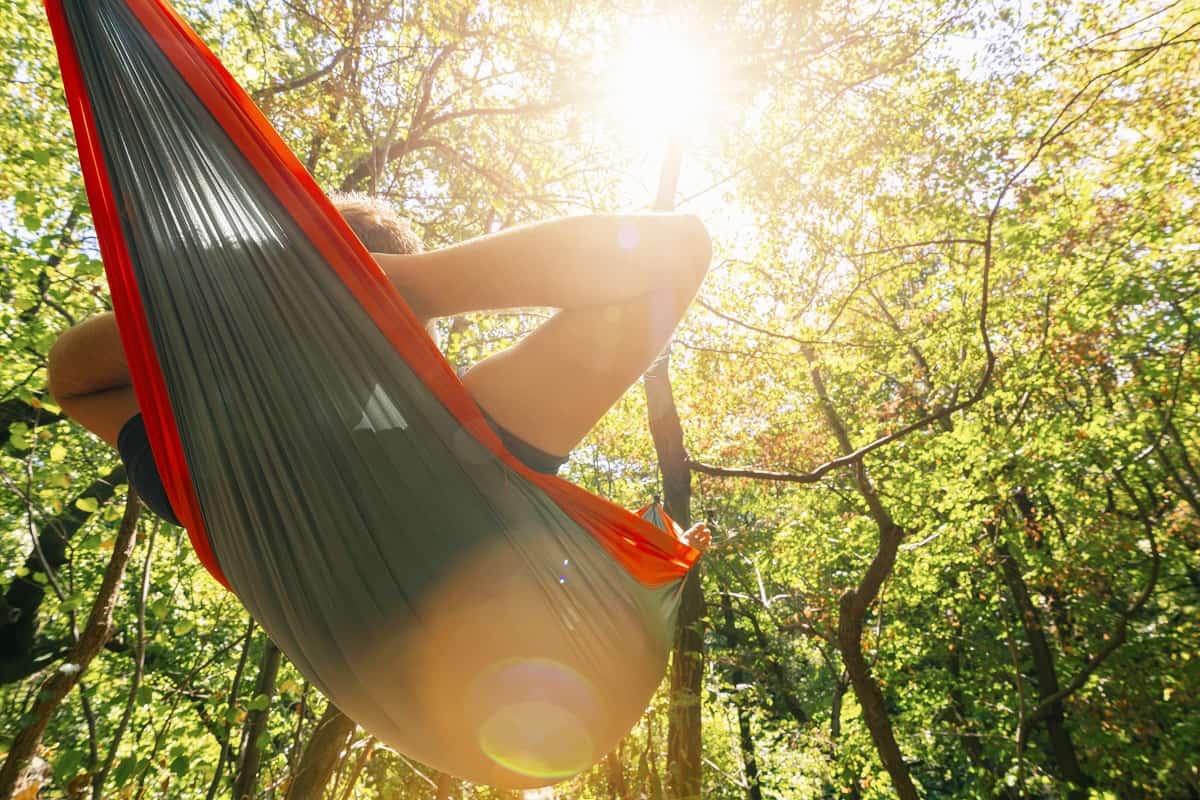
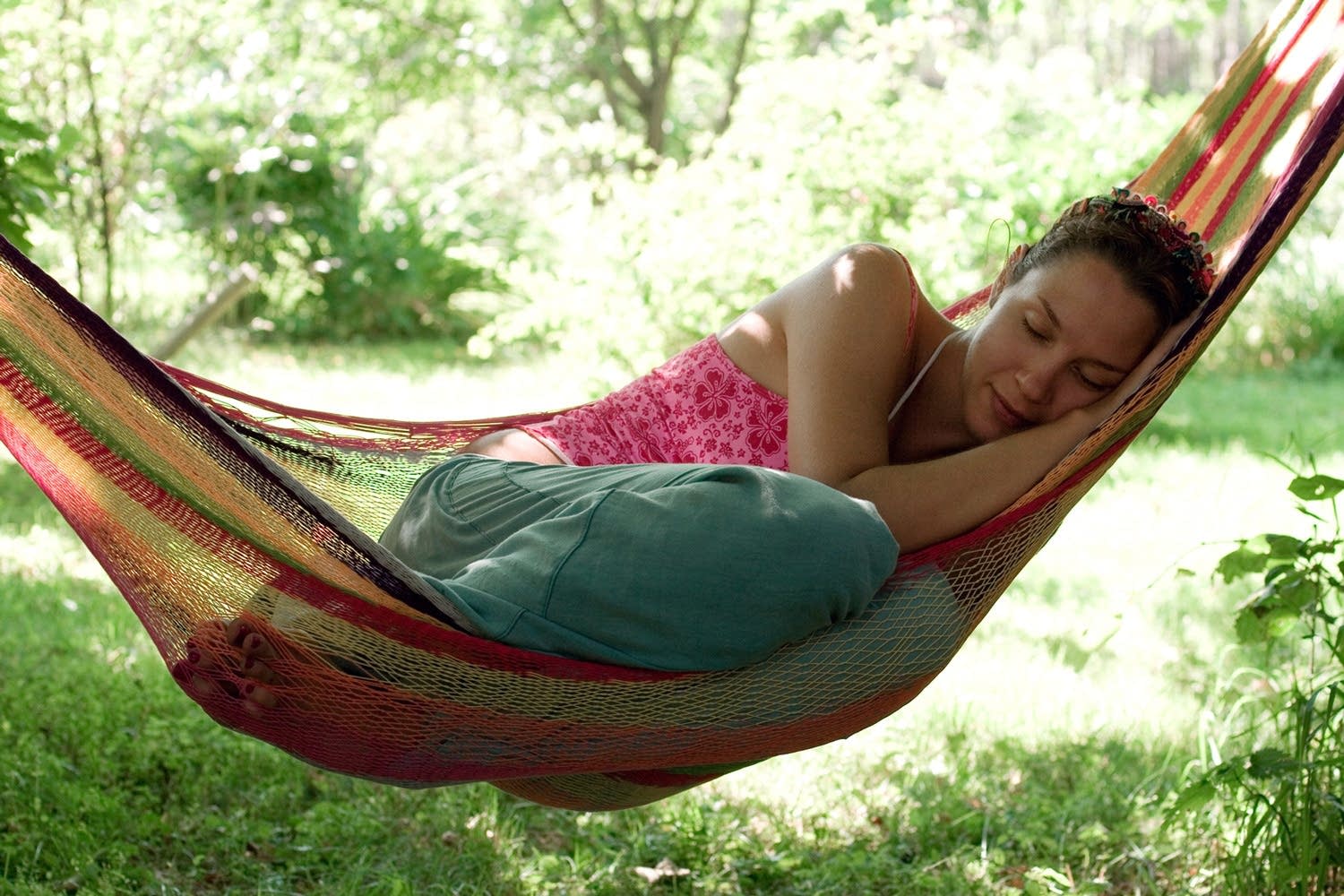
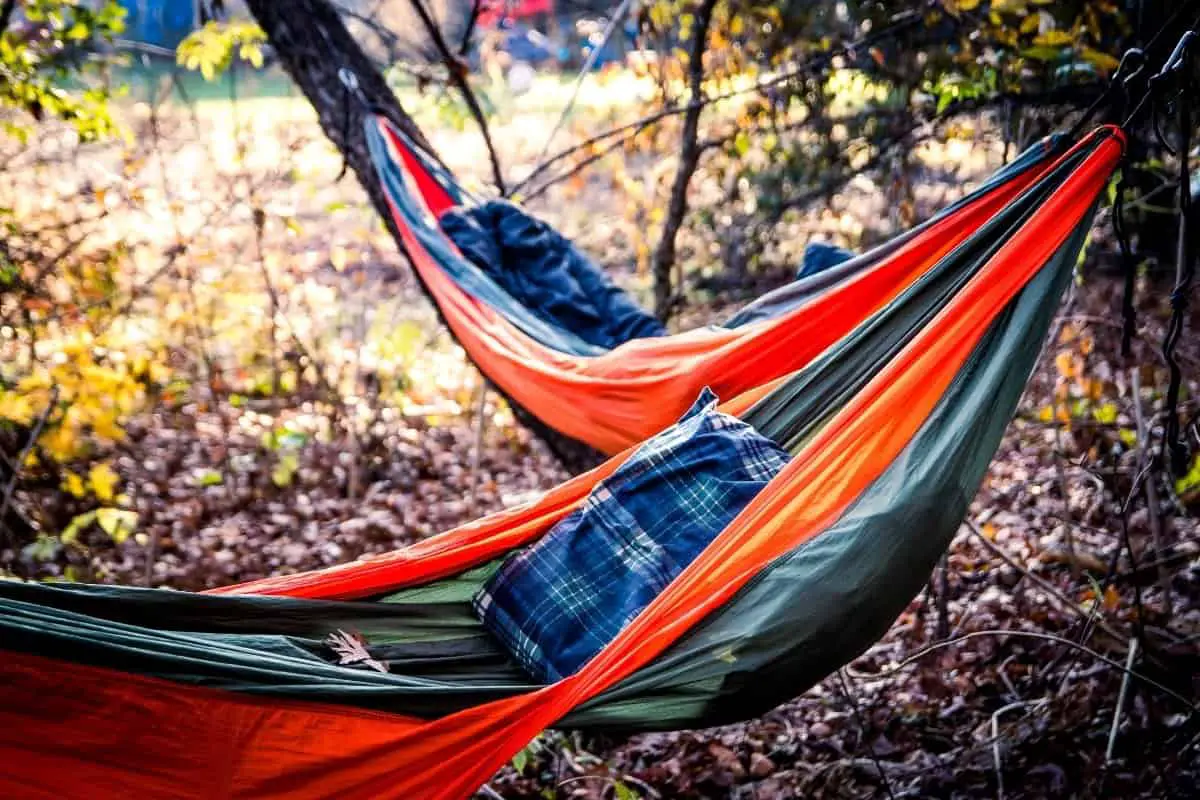


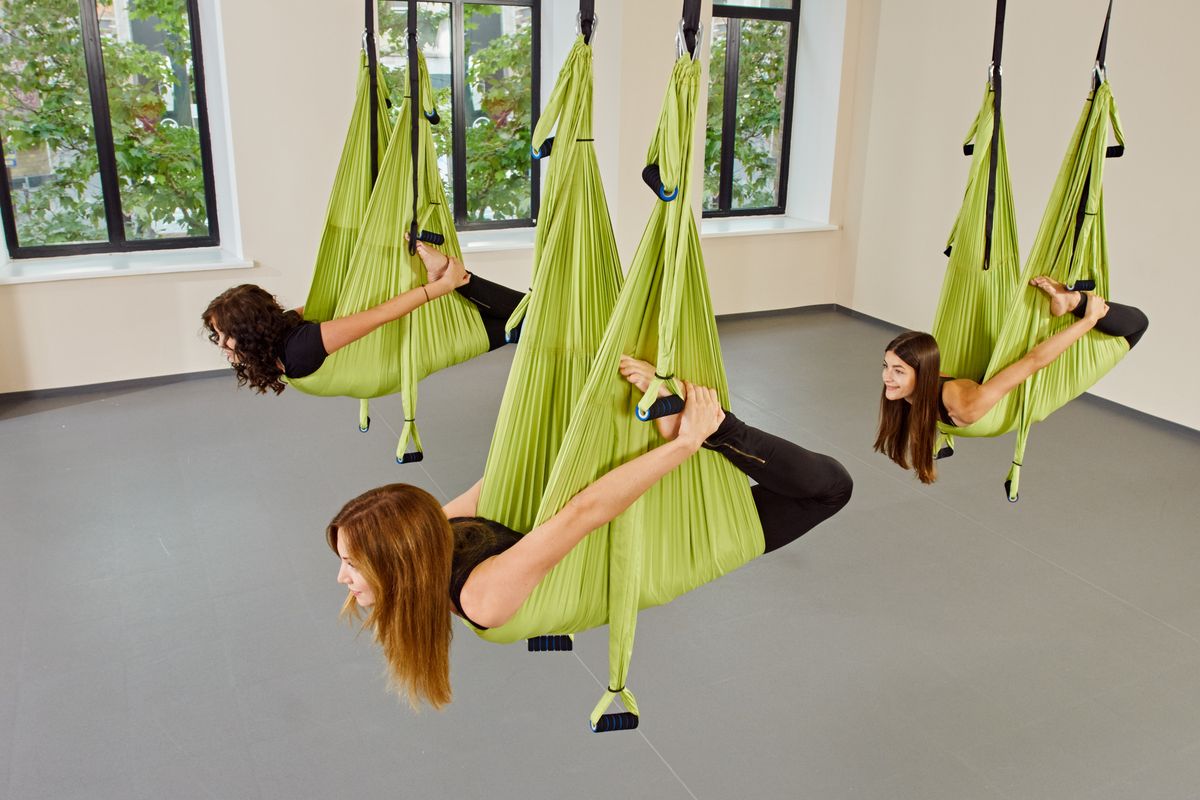

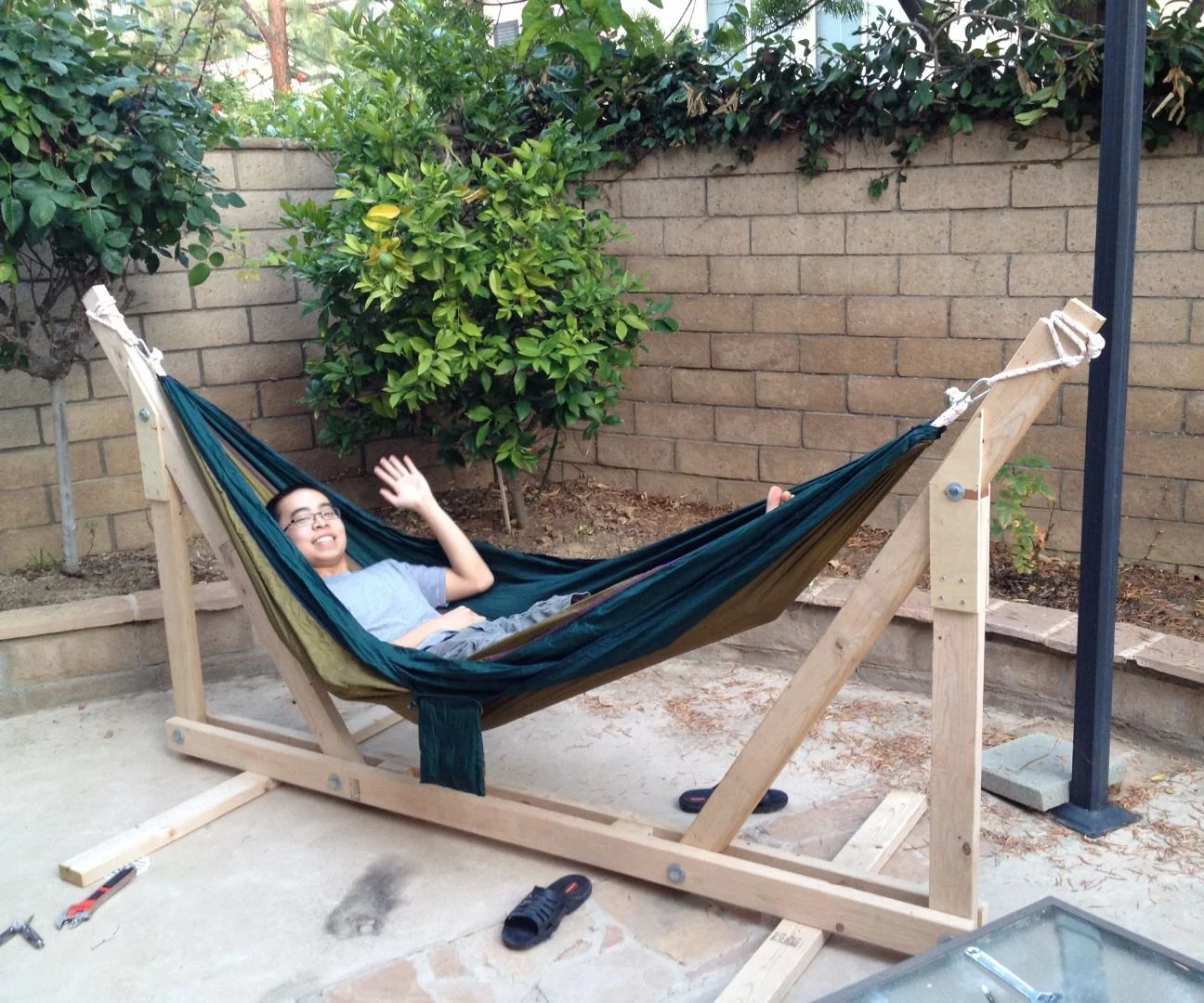
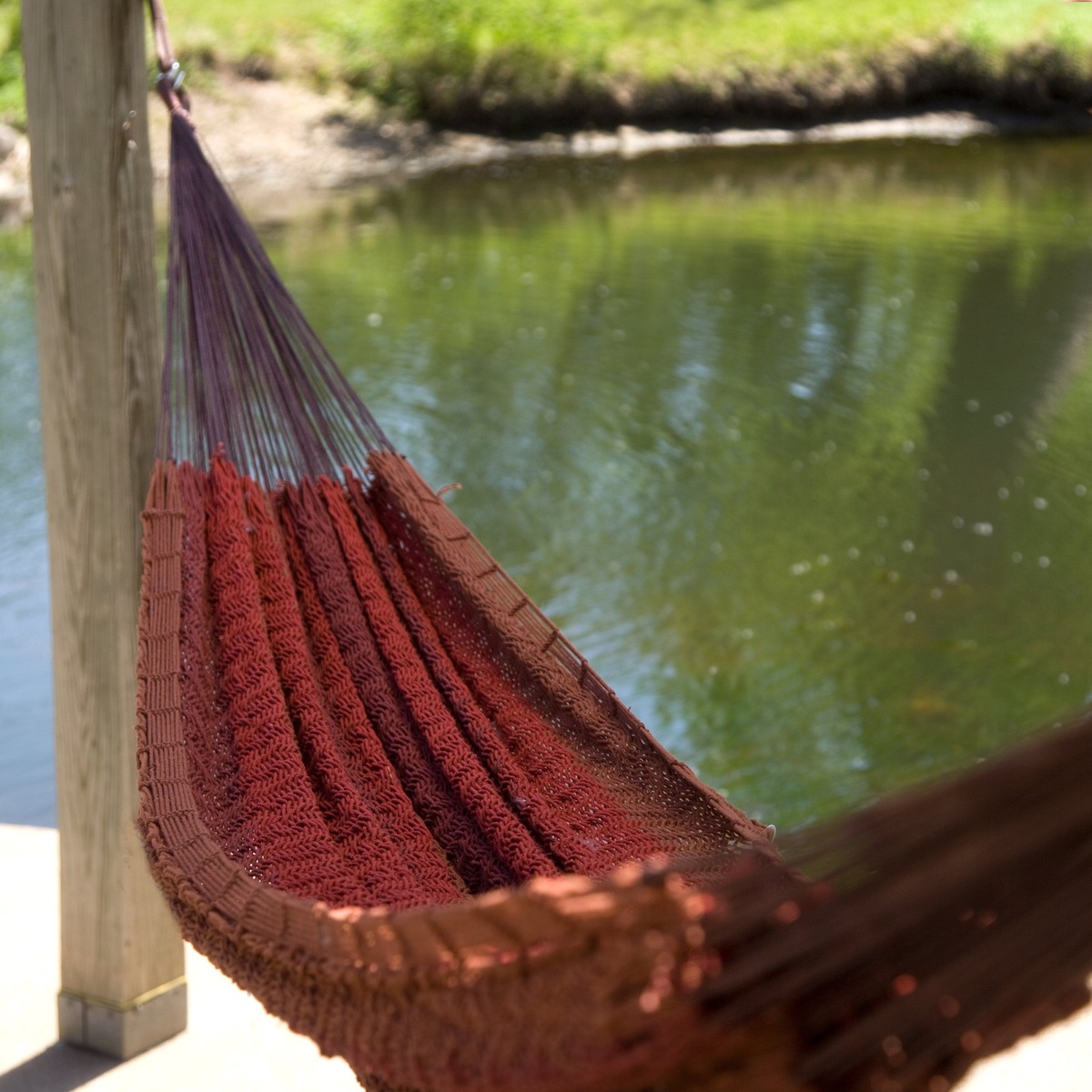
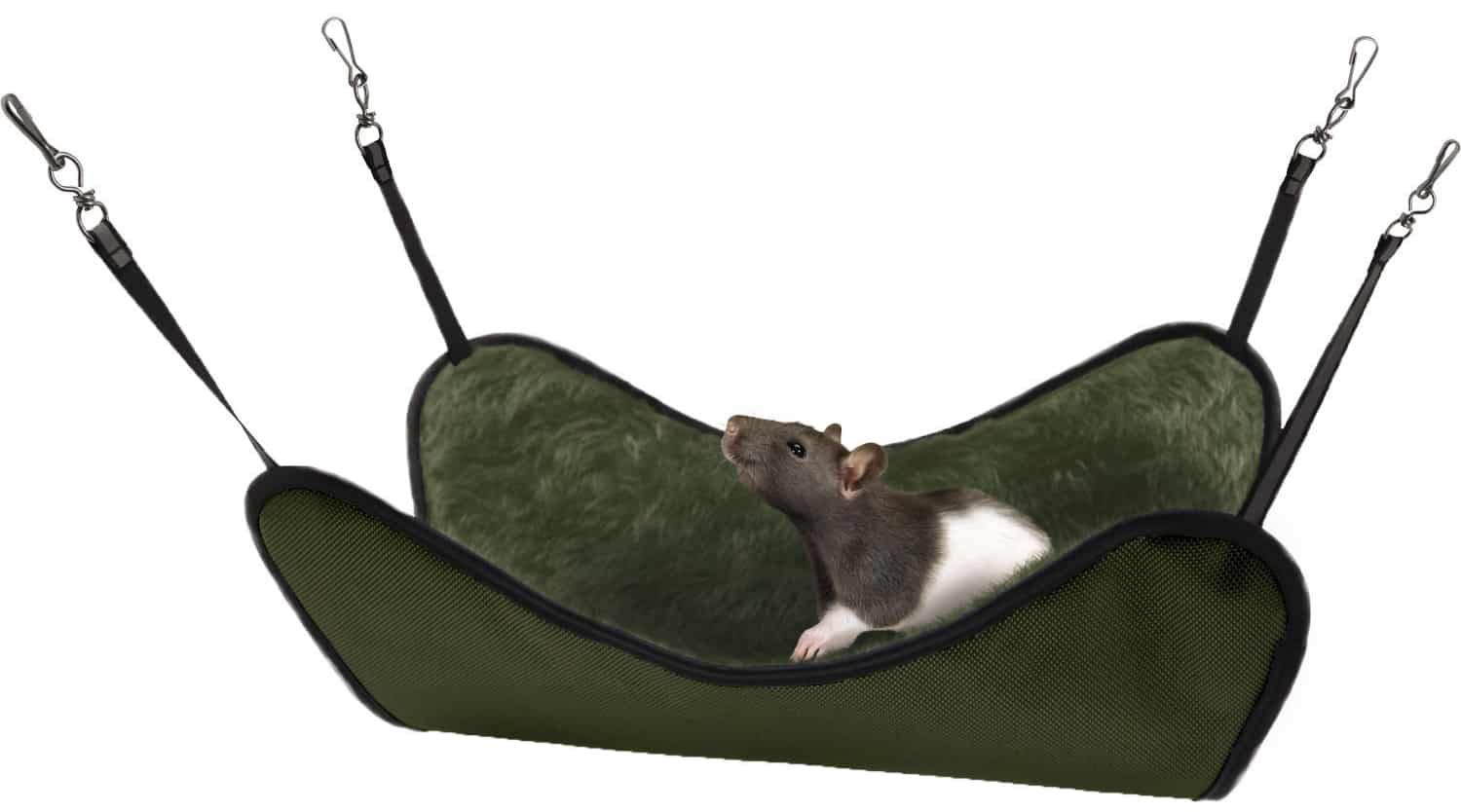

0 thoughts on “How To Camp In A Hammock”